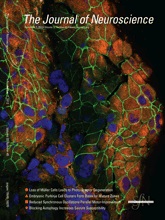- EN - English
- CN - 中文
Electroolfactogram (EOG) Recording in the Mouse Main Olfactory Epithelium
小鼠主嗅上皮中的嗅电图(EOG)记录
发布: 2013年06月05日第3卷第11期 DOI: 10.21769/BioProtoc.789 浏览次数: 9630
评审: Xuecai Ge
Abstract
Olfactory sensory neurons in the main olfactory epithelium (MOE) are responsible for detecting odorants and EOG recording is a reliable approach to analyze the peripheral olfactory function. However, recently we revealed that rodent MOE can also detect the air pressure caused by airflow. The sensation of airflow pressure and odorants may function in synergy to facilitate odorant perception during sniffing. We have reported that the pressure-sensitive response in the MOE can also be assayed by EOG recording. Here we describe procedures for pressure-sensitive as well as odorant-stimulated EOG measurement in the mouse MOE. The major difference between the pressure-sensitive EOG response and the odorant-stimulated response was whether to use pure air puff or use an odorized air puff.
Keywords: Olfaction (嗅觉)Materials and Reagents
- 3-heptanone (Sigma-Aldrich)
- Forskolin (Sigma-Aldrich)
- IBMX (3-isobutyl-1-methylxanthine) (Sigma-Aldrich)
- SCH202676 (Sigma-Aldrich)
- Compressed pure nitrogen air (Praxair Inc)
- Thin-wall glass capillary (OD 1.0 mm ID 0.78 mm) (Harvard Apparatus)
- C57Bl/6 mice (Charles River or Jackson Lab)
Note: Mice used were 2.5-5 months age-matched males or females. Mice were maintained on a 12 h light/dark cycle at 22 °C, and had access to food and water ad libitum. All animal procedures were approved by the Institutional Animal Care and Use Committee at the University of Washington and performed in accordance with their guidelines.
- Ringer’s solution (see Recipes)
Equipment
- Dissecting microscope
- Faraday cage
- Air table
- Specimen stage
- Nitrogen air tank
- Air puff valve (ASCO scientific, catalog number: 330224S303 )
- Glass cylinder
- Air delivery tube
- Oscilloscope
- CyberAmp 320 (an electric amplifier) (Axon Instruments)
- Recording electrode and reference electrode
- Digidata 1332A (Axon Instrument)
- MiniDigi 1A processor (Axon Instruments)
- S48 Stimulator (Glass Technologies)
- Hum Bug (a line frequency noise eliminator) (Quest scientific)
- Flow meter (Praxair Inc, Seattle, WA, catalot number: PRS FM43504 )
- Horizontal electrode puller, Model p-97 (Sutter Instruments)
- Computer
Software
- Clampex 10, Clampfit 10, Axoscope 10 (All from Axon Instruments Foster City)
Procedure
文章信息
版权信息
© 2013 The Authors; exclusive licensee Bio-protocol LLC.
如何引用
Readers should cite both the Bio-protocol article and the original research article where this protocol was used:
- Chen, X., Xia, Z. and Storm, D. R. (2013). Electroolfactogram (EOG) Recording in the Mouse Main Olfactory Epithelium. Bio-protocol 3(11): e789. DOI: 10.21769/BioProtoc.789.
- Chen, X., Xia, Z. and Storm, D. R. (2012). Stimulation of electro-olfactogram responses in the main olfactory epithelia by airflow depends on the type 3 adenylyl cyclase. J Neurosci 32(45): 15769-15778.
分类
神经科学 > 感觉和运动系统
您对这篇实验方法有问题吗?
在此处发布您的问题,我们将邀请本文作者来回答。同时,我们会将您的问题发布到Bio-protocol Exchange,以便寻求社区成员的帮助。
Share
Bluesky
X
Copy link











